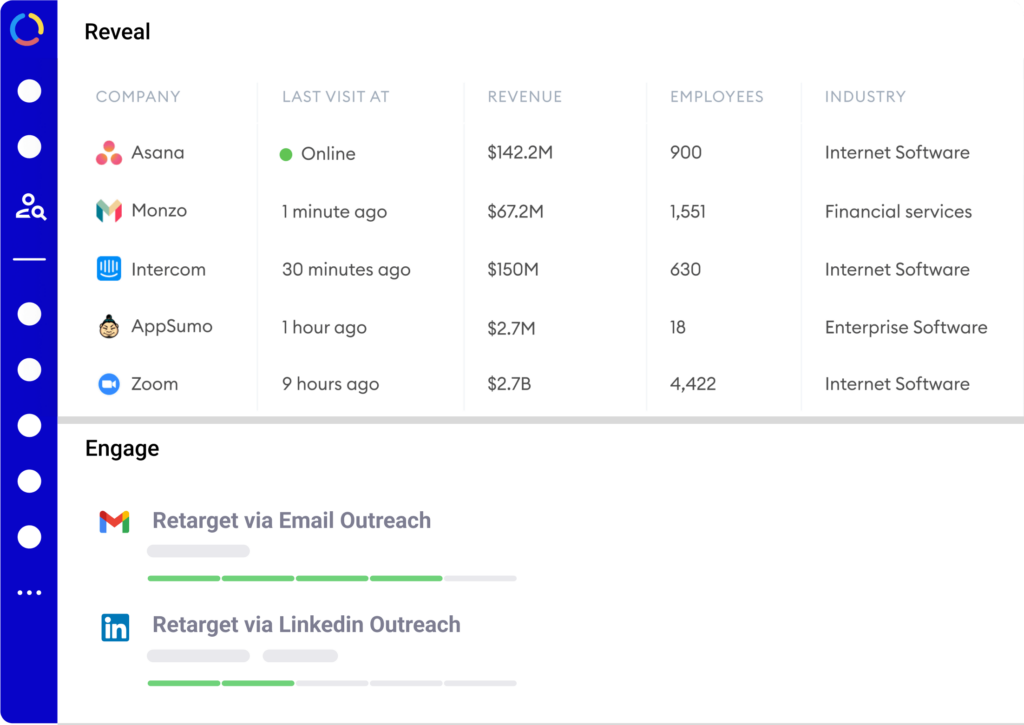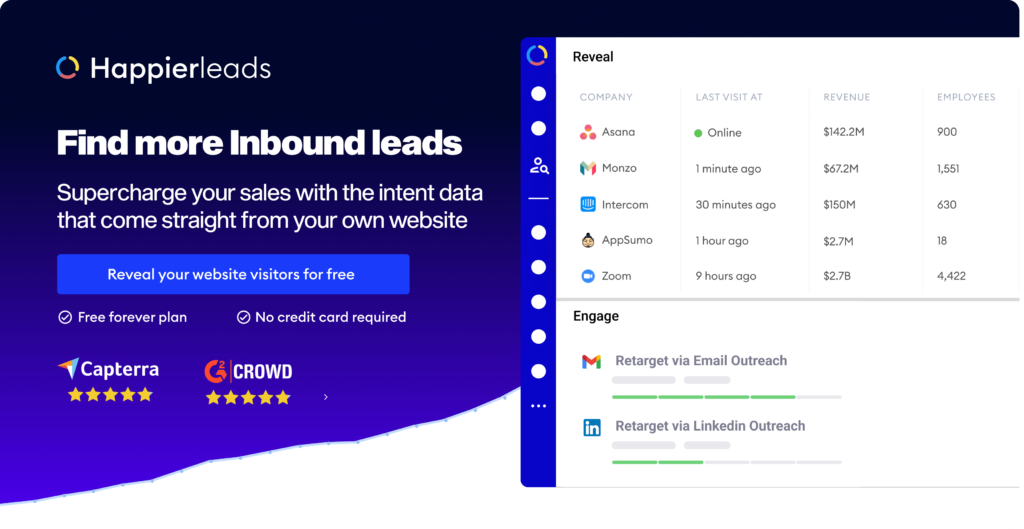Introduction
A Buying Process is the series of steps that a consumer will take to make a purchasing decision. Have you ever wondered what is actually going on behind the scenes in the buying process? Every purchase made is part of a larger narrative that can tell you a lot about the customer, their needs, and the decisions they make.
We will uncover the buying process, exploring important indicator data that can give you a better understanding of your customers and help you refine your marketing strategies.
We will also discuss how to unlock this data to better understand customer preferences and improve sales. So, if you want to get the most out of your customer relationships, read on to learn more.
Problem: Uncovering the Buying Process
For any business that sells products or services, understanding the buying process is essential to success. However, uncovering the buying process can be difficult. In order to better understand the buying process, it is important to uncover, analyze, and interpret the indent data that forms the basis of the buying process.
What is indent data? Indent data is the transactional data that shows how, when, and where customers make purchase decisions. It includes information such as time of purchase, type of product, size of purchase, and other demographic information. This data can provide insight into the buying process, enabling businesses to make better decisions about how to approach the buying process.
However, interpreting indent data can be a challenge. It can be difficult to interpret as it is often presented in a complex format. Second, indent data can be voluminous, making it difficult to identify the key pieces of information that will help businesses understand the buying process. Finally, it can be difficult to interpret the data without access to specialized software and analytics.
Fortunately, there are a few strategies for uncovering the buying process using indent data. Businesses should focus on the most relevant data points, such as the type of product, size of purchase, and time of purchase. This will help businesses quickly identify the key patterns in the data that will help uncover the buying process. Second, businesses should use specialized software and analytics to interpret the data. This will provide a comprehensive overview of the buying process, enabling businesses to make better decisions.
By uncovering the buying process using indent data, businesses can gain valuable insights that will help them optimize their marketing efforts and increase their sales. This will ultimately result in a more successful business.
What is the Buying Process?
The buying process is an integral part of any business, allowing companies to purchase the materials, and services that are needed to make the products and services they provide.
The buying process starts by building a relationship with suppliers, determining the needs of the company, and researching different suppliers before making a purchase.
The indent is the document that summarizes the details of the purchase, including the item being purchased, the quantity, the price, and any other relevant information. This indent is then sent to the supplier to initiate the purchase. The supplier then reviews the indent and if they agree to it, they will process the purchase and send it back to the buyer with a confirmation.
This is a vital step in the buying process, as it allows the buyer to track their resources and ensure that they have the right items in the right quantity at the right time.
Indent data is an important part of the buying process, as it allows both buyers and suppliers to keep track of all the details of the purchase.
This data helps buyers keep track of their budget, inventory, and resources, and it also helps suppliers ensure that they are providing the right items in the right quantity on time. By understanding the buying process and the importance of indent data, businesses can ensure that they are purchasing the materials and services they need in a timely manner and at the best prices.
What is Important Indicator Data?
In the buying process, there’s one key piece of data that often gets overlooked: important indent data. Many people don’t realize this, but indent data can be incredibly powerful when it comes to understanding the buying process.
In a nutshell, indent data refers to the data collected during the buying process, such as the customer’s behaviors and preferences. It’s the key to understanding what customers want, what type of products or services they’re looking for, and how best to reach them with the right message.
When it comes to using indent data to uncover the buying process, it’s important to look at the bigger picture. While some data may seem mundane or insignificant at first glance, it can provide valuable insights when taken into context.
For example, data such as website visits, product reviews, or customer complaints can all reveal clues about a customer’s purchasing preferences. Additionally, data about the customer’s demographics, lifestyle, and interests can all be used to better understand their buying behavior.
By taking the time to gather and analyze this data, businesses can gain a better understanding of the buying process and how to better connect with customers. This can help them target their message more effectively and increase their chances of making a sale.
At the end of the day, important indent data is essential to uncovering the buying process. By understanding this data and using it to guide their marketing and sales strategies, businesses can improve their chances of success.
Why this Data is Important
It provides invaluable insight into the buying habits of customers, giving businesses the opportunity to gain a competitive advantage and make more informed decisions.
It can include everything from the product itself, to the time of purchase, to the method of payment.
Analyzing this data gives businesses a clear picture of the demands of their customers, allowing them to adjust their strategies accordingly.
By understanding the buying patterns of their customers, businesses can identify what promotions or discounts may be beneficial, as well as when and where to target their marketing efforts. Additionally, businesses can also identify which types of products or services are selling well and which need to be discontinued.
Moreover, indent data can also help companies better understand their customers’ needs and preferences. Depending on the data collected and analyzed, businesses can gain insight into who their customers are, their shopping habits, and the types of products they prefer.
This can help businesses personalize their services and products to better suit their customers’ needs, leading to more satisfied customers and more loyal relationships.
Overall, indent data is an invaluable resource in the buying process as it provides businesses with a better understanding of their customers and their preferences, giving them the ability to make better decisions and gain a competitive advantage.
By analyzing and leveraging this data, businesses can better meet their customer’s needs and develop more effective marketing strategies that will bring in more sales and increase customer loyalty.
Understanding Customer Needs and Preferences
When trying to uncover the buying process, there are many key pieces that should be taken into account. Knowing the customer’s preferences and needs is essential to understanding how customers make decisions when purchasing products or services.
One of the most important pieces of indent data is customer demographics. Demographics provide a snapshot of who the customer is in terms of age, gender, race, education level, and income level. This information helps businesses understand the needs and preferences of their target market.
Another key piece of indent data is psychographics. This type of information provides an insight into the individual’s personality and lifestyle. Knowing what motivates a person to purchase something and what their interests are can help businesses tailor their product or service to meet their customer’s needs.
A third and often overlooked piece of indent data is customer behavior. This data sheds light on how customers are interacting with businesses and products. This may include what type of websites they visit, what types of emails they open, and what type of ads they click on. Understanding customer behavior can help businesses create better customer experiences and adjust their products or services accordingly.
Finally, understanding customer satisfaction is an important part of uncovering the buying process. Knowing how satisfied customers are with a product or service can help businesses make improvements if needed. Surveys, reviews, and customer feedback are all excellent ways to measure customer satisfaction.
Understanding customer needs and preferences is an essential part of uncovering the buying process. By taking into account the key pieces of indent data discussed above, businesses can gain valuable insights into how their customers interact with their products and services. Doing this can help businesses create better experiences and more successful products.
Developing Effective Marketing Strategies
When it comes to developing effective marketing strategies, understanding the buying process is key. Unfortunately, the buying process can be complex, and deciphering important indent data can be daunting. But with the right knowledge, businesses can successfully manage the buying process and use it to their advantage.
Knowing the different types of indent data will help businesses develop effective marketing strategies. The first type of indent data is customer behavior data. This data provides businesses with insights into customer buying habits, such as demographics, payment preferences, and product preferences. Having this data allows businesses to tailor their marketing approach to these specific audiences.
The second type of indent data is product data. Product data includes information about the product itself, its characteristics, and its performance in the market. It is important to have this data since it can help businesses strategically position their products and services to reach their target audience.
The third type of indent data is pricing data. This data can provide businesses with insights into pricing trends, competitive pricing, and price sensitivities. Knowing this information can help businesses determine how to price their products and services in a way that appeals to customers and maximizes their profits.
Finally, the fourth type of indent data is customer service data. This data can provide businesses with insights into customer service issues, such as the types of inquiries, complaints, and requests customers make. Having this data can help businesses develop efficient customer service strategies that improve customer satisfaction and lead to higher sales.
Improving Sales and Customer Retention
Understanding the buying process is key to improving sales and customer retention for any business. It is important to know what factors influence a customer’s decisions and have the necessary data to back up the analysis. One of the most important pieces of information to consider when evaluating the buying process is indent data.
Indent data is a type of data used to measure the customer’s buying intent. It includes information such as the number of times a customer visits the website, the number of items they have added to their cart, the total cost of their purchase, and even the payment methods they try to use.
For example, if a customer visits a website multiple times, and keeps adding an item to their cart but never moves forward to checkout, this could be a sign that they are hesitant to purchase.
On the other hand, if a customer adds multiple items to their cart and proceeds to checkout, they are more likely to complete the purchase.
This data can help the business evaluate its overall sales performance, as well as figure out what customers are more likely to purchase.
Furthermore, indent data is also useful for tracking customer retention. This can be a great way to increase loyalty and sales over time.
In conclusion, indent data is a powerful tool for businesses to gain insights into the buying process. Armed with this data, businesses can better optimize their sales and customer retention strategies. As the online market continues to grow and evolve, indent data will become even more important for businesses to have an edge over the competition.
Solution: How to Unlock Important Indicator Data
Uncovering the buying process is a business undertaking that requires an in-depth look at the data available. With the ability to unlock important indicators of customer behavior, a business can use this data to make informed decisions, improve marketing strategies, and increase customer engagement and satisfaction.
When it comes to deciphering customer behavior, one of the most important pieces of data to consider is indent data. This data reveals the behaviors of customers in regards to their buying process, giving businesses a better understanding of their customers and their purchasing decisions.
To unlock the data hidden in indent data, businesses must first identify the key factors that drive customer decision-making. This includes understanding the customer lifecycle and determining the key points within the buying process that are most important.
Once the framework has been created, businesses should look for crucial insights from within the data. These insights can come from a variety of sources, from web analytics to sales and marketing activities. By looking at the data from these sources, the business can identify key trends and behaviors of customers throughout the buying process.
The data gathered from these insights can be used to provide key insights into customer decisions. This data can help businesses better understand the buying process and make decisions that take into account the customer’s experience.
Finally, businesses should use the data to drive positive change in the business. This can include implementing new marketing campaigns, adjusting the website experience to better cater to the customer’s journey, or even developing new products and services.
By unlocking indent data and leveraging the insights gained, businesses can gain a much deeper understanding of their customers. This understanding can help them make informed decisions and increase customer engagement and satisfaction.
Analyzing Customer Purchase History
It is no secret that understanding a customer’s buying process is key to successful sales. Companies can use the important data found in a customer’s indent data to gain insights into their purchasing behavior. Indent data can be used to analyze a customer’s purchase history, identify areas of opportunity, and inform a company’s product or service offerings.
Indent data can offer a wealth of valuable information. It can provide information on the customer’s purchasing history, from the product or service purchased, to the frequency of purchase and the amount purchased. With this data, businesses can better understand the customer’s needs, preferences, and buying behavior.
Indent data can also give insight into what drove customers to purchase a certain product. For example, is there a particular seasonal trend that drove sales? Is there a specific promotion or special offer that caused customers to make a purchase? By looking at the indent data, companies can gain valuable insights into customer behavior and the effectiveness of their marketing techniques.
Finally, indent data can be used to identify areas of opportunity. By analyzing customer purchase history, companies can identify potential customer segments and target them with new product and service offerings. For example, if a company notices that a particular customer segment is more likely to purchase a certain product, they can create special offers or promotions to encourage other customers to purchase it too.
Indent data is an invaluable tool for companies who wish to better understand the buying process and gain insights into customer behavior. With its wealth of data, companies can create more effective marketing strategies and target customer segments more effectively.
Using Surveys and Other Feedback Tools
When it comes to understanding the buying process, one of the best ways to glean insights is through survey apps and other feedback tools. Surveys are an important way to capture data on consumer behavior, preferences, and needs. Surveys are a great tool for uncovering indent data – data that can inform decisions made throughout the buying process.
When conducting surveys, it’s important to ask the right questions in order to uncover the most comprehensive and actionable insights. Questions should be open-ended, allowing respondents to provide additional context and detail to their answers.
Surveys can be used to uncover a variety of data points, such as what motivates customers to make a purchase, what frustrates them about the buying process, and how likely they are to recommend a product or service.
Aside from surveys, there are other feedback tools that can be used to uncover valuable indent data. For example, customer interviews offer a more intimate and engaging way to understand consumer preferences and needs. Interviews are also a great way to gain a deeper understanding of customers and their experiences.
Focus groups are another good way to uncover indent data. They can provide a wide range of insights, including consumer attitudes and opinions, insights into purchasing behavior and decision-making, and ideas for product or service improvements.
Ultimately, surveys and other feedback tools are invaluable when it comes to uncovering indent data and understanding the buying process. By asking the right questions and gathering feedback from the right people, businesses can gain valuable insight into how to improve their products and services, as well as how to better engage with their customers.
Tracking Competitor Pricing and Offerings
When it comes to understanding how customers make decisions and complete purchases, it’s essential to track competitor pricing and offerings. By monitoring indent data for the goods and services your competitors are selling, you can quickly and easily assess where you stand in the market and better position yourself to meet customer demands.
Indent data can provide invaluable insights into the buying process, from understanding product preferences to monitoring pricing alternatives. It can even highlight customer behavior when trying new products, allowing you to modify and adjust your product strategies accordingly. Analyzing competitors’ indent data can also give you an edge when it comes to pricing – allowing you to better gauge the competition and adjust your prices in response.
By having access to competitor pricing and offerings, you can build a better understanding of customer trends and preferences and craft a more successful marketing strategy. For example, if you know that a certain competitor is offering their product at a lower price, you can adjust your pricing accordingly or find ways to differentiate and add additional value to your offering.
You can also use the data to spark ideas for product development and innovation – for example, if a competitor’s product is selling well, you can use that information to create a similar product or unique variant.
Indent data can also be used to monitor customer feedback and reviews. This can help you stay ahead of the game and ensure that your products are meeting customer demands.
The buying process is a complex, multi-faceted journey, and understanding competitor offerings, pricing, and customer behavior is key to success. With indent data, you can gain access to valuable insights and use them to better position your product in the market and boost your success.

Conclusion
The buying process can be difficult to understand, but by uncovering and using key indicator data, you can gain valuable insights into customer needs, develop effective marketing strategies, and improve sales and customer retention.
By analyzing customer purchase history, using surveys and other feedback tools, and tracking competitor pricing and offerings, you can gain a competitive edge and find more ways to increase your profits.
With the right data and analysis, you can unlock the secrets of the buying process and better understand why customers make their decisions. With this knowledge, you can provide better customer experiences and boost your business.














 This website uses cookies.
This website uses cookies.